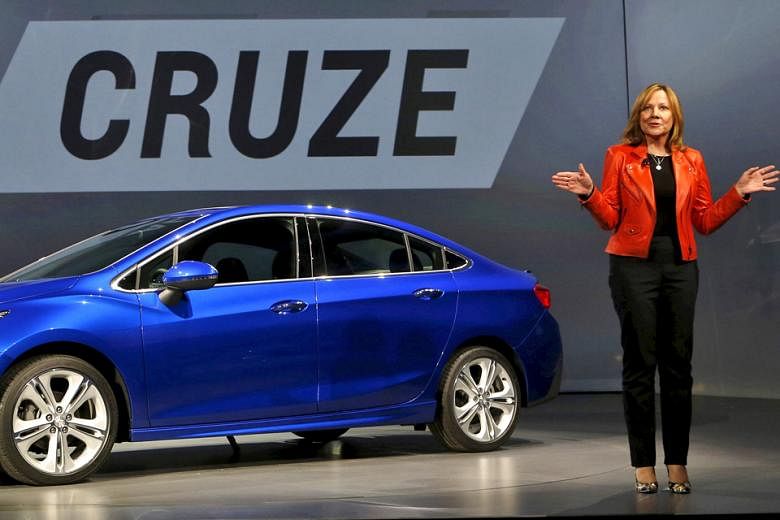SOUTHFIELD (Michigan) • In person, General Motors (GM) chief executive Mary Barra is smiling and congenial. As a manager, she is looking downright cold-blooded.
Her move this week to close five plants and slash 14,000 jobs in North America - where GM earns most of its profits - is the most recent example of her willingness to cut any staff, any vehicle and stop doing business any place that doesn't make fat returns.
She is taking much of the savings and ploughing them into new technologies, such as electric and autonomous vehicles, betting GM's future growth will come from selling rides in self-driving electric models, not building cars and trucks for emerging markets and finding new buyers in the United States.
GM's Cruise unit is developing the company's self-driving technology and plans to have a model ready to operate as a ride-hailing business starting late next year. GM bought the unit for US$1.5 billion (S$2 billion) and is investing about US$1 billion a year in it.
Ms Barra's gamble to cut the core business and bet on self-driving taxis "is a huge risk", said Ms Maryann Keller, a long-time industry analyst with a self-titled consulting firm in Stamford, Connecticut.
She added: "There is no proof that the technology will be ready in 24 months, or that it will be a profitable business."
Ms Keller said boosting electric car output will be important for the Chinese market. Starting in January, all major manufacturers there must meet minimum requirements for producing new-energy vehicles.
Here are some of the changes Ms Barra has made since becoming chief executive in January 2014.
RUSSIA
Her first big move was cutting back in Russia, idling a St Petersburg plant in 2015 and halting sales of GM's Opel brand and most Chevrolet models. The company still sells a few high-priced models that it exports to the country.
INDONESIA
GM closed a plant in Indonesia in 2015 and fired 500 workers after reportedly losing about US$200 million on the Chevrolet Spin.
EUROPE
Ms Barra sold GM's Opel business in Europe to PSA Group last year for US$2.2 billion and assumed more than that in pension liabilities to exit the market. The Detroit automaker acquired 80 per cent of the German company in 1929 and purchased the remaining 20 per cent in 1931.
INDIA
Ms Barra decided to scrap a US$1 billion investment in India last year and stop selling Chevrolet models there. The company's market share was just 1 per cent, and its cars made very little profit.
SOUTH AFRICA
GM sold its South African commercial-vehicle manufacturing plant and other operations to Isuzu Motors last year and phased out its Chevrolet brand there. GM began vehicle production in the country in 1926.
AUSTRALIA
GM closed its Holden factory in South Australia in October last year, ending more than a century of car manufacturing on the continent.
SOUTH KOREA
GM announced in February that it planned to close one plant and threatened to leave South Korea entirely if it did not get concessions from workers to stem losses. After several rounds of negotiations, the company said in April it had reached a deal to ward off potential bankruptcy.
BLOOMBERG

